Zynga
I started working at Zynga when it was still in the start up phase. It has since become a successful studio making casual games of all types. I learned a lot about making games during my time there. I only spent about 3.5 years there but felt like much longer given the amount of work I did across several titles in various roles.
Hidden Chronicles
Hidden Chronicles was a hidden object game. It saw the players building out their invest / express game board as the progressed through the story. Hidden Chronicles had a narrative component that players enjoyed that took them through history and around the world to find objects in exciting locations. A fun fact, Hidden Chronicles was the first game launched after Zynga IPO'd.
As Art Producer I was responsible for making sure the art pipeline ran smoothly. I worked with the art director and artists to improve the speed and efficency with which we were creating art for the project. I also worked to place the in house artists in roles, and give them responsibilties, that would help progress their personal grownth and careers.
As Art Producer I was responsible for making sure the art pipeline ran smoothly. I worked with the art director and artists to improve the speed and efficency with which we were creating art for the project. I also worked to place the in house artists in roles, and give them responsibilties, that would help progress their personal grownth and careers.
Roles and Responsibilities:
- Work with Art Director to make sure visual targets were being hit by both in house and external vendors
- Work with the art team, and other stakeholders, to increase the efficiency of the art pipeline to be more agile in responding to game needs
- Develop and foster positive relationships with other disciplines as well as the in house art team
Prague
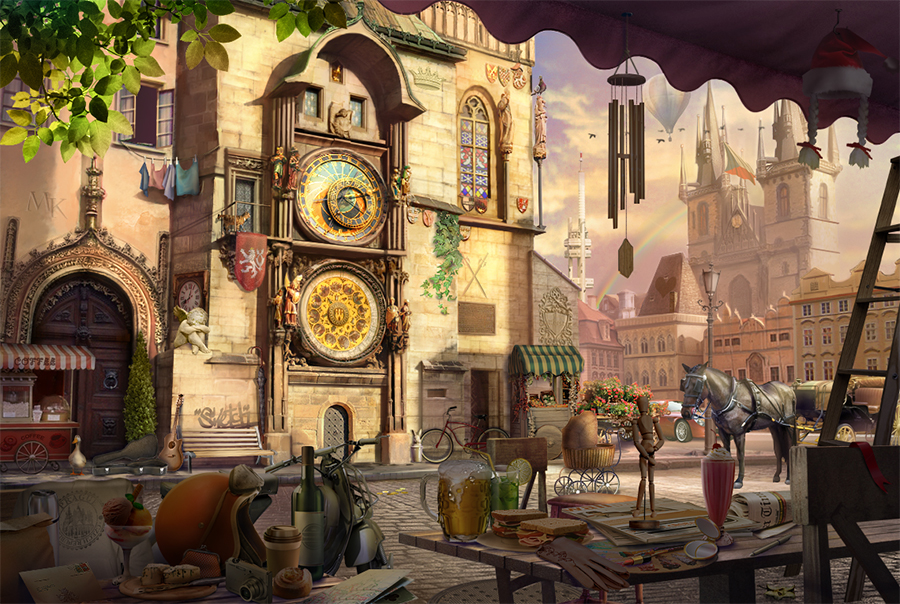
Astronomical clock in Prague.
Embalming Room
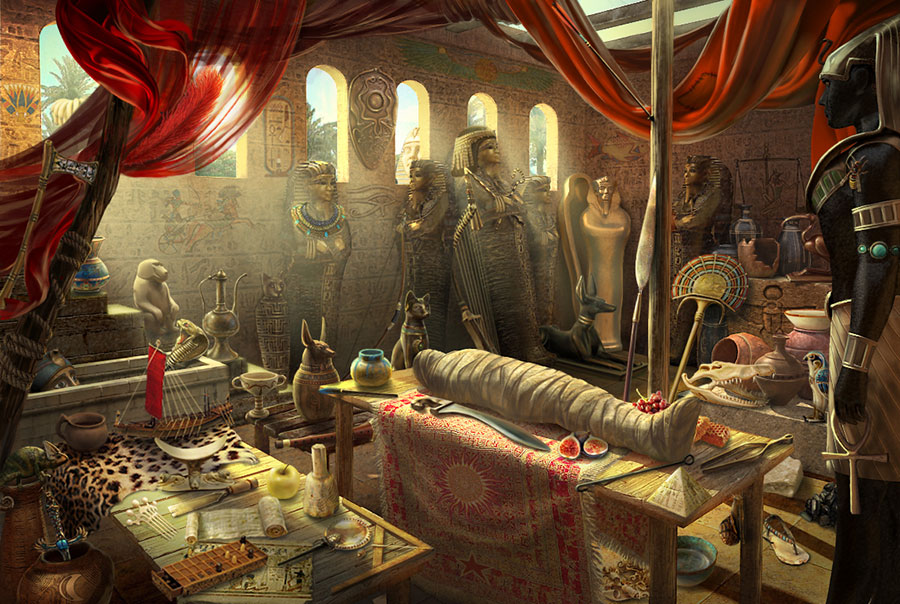
Egyptian Embalming room.
Curator Office: Concept + Mood Board
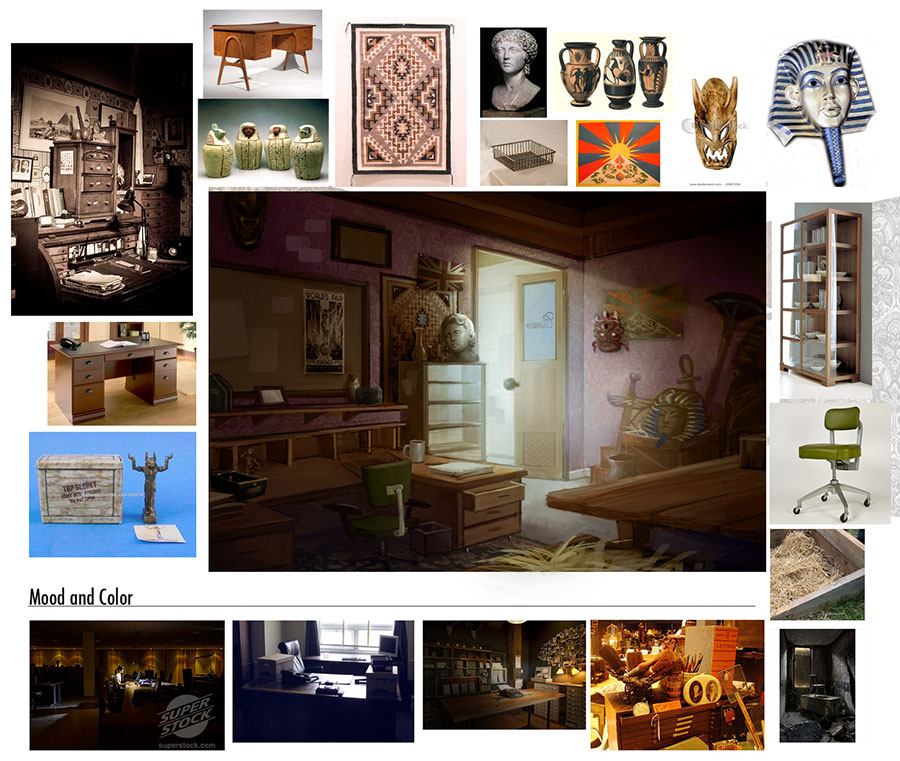
There are many steps that go into the creation of Hidden Object scene. Once the high level story was decided on and locations were approved, art would start concepting potential shot compositions for the chosen locations and create a concept image and mood board.
Concept + Mood Board:
- Concept shows the composition and angle of the scene
- Highlights the lighting and mood of the scene
- Uses image references for objects to flesh out the base scene
Curator Office: 3D Block
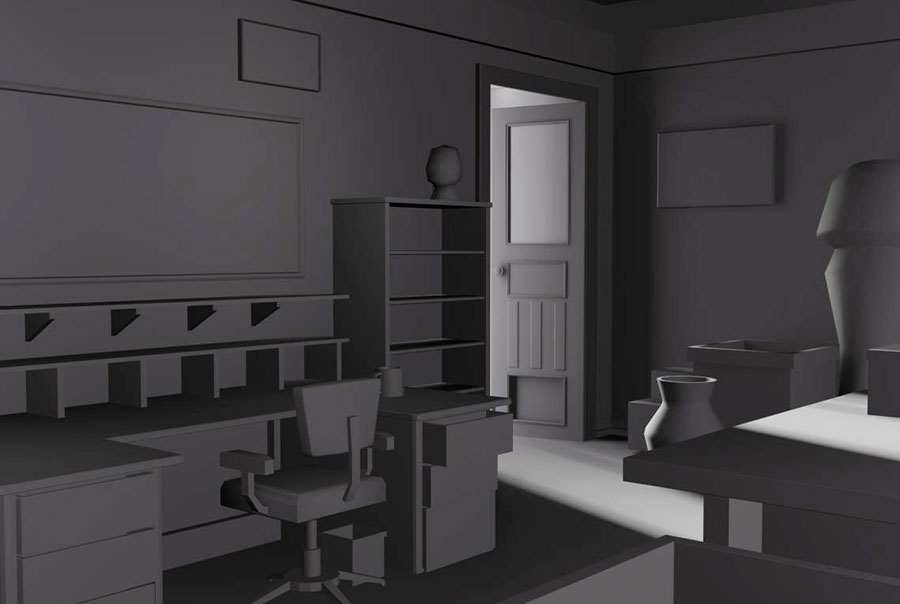
Once the mood board and concepts were approved the scen would go into the 3D blocking phase.
3D Block:
- Quick way to block out the scene in 3d to maintain perspective
- Creates a skeleton image for paint over later in the process
- Allowed the team to quickly visualize the scene at resolution
- Could iterate as needed if desired composition or scale was off
Curator Office: 1st Pass Paintover
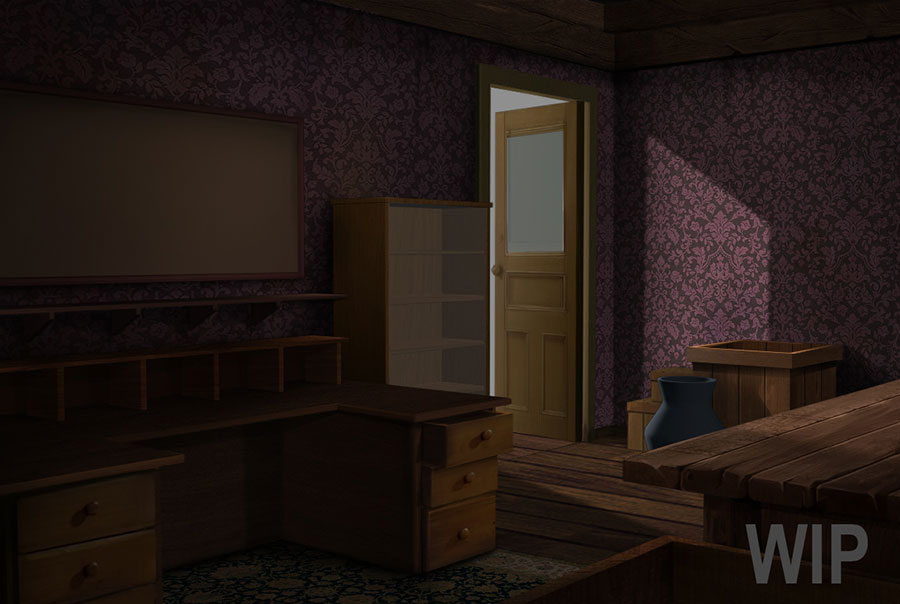
First pass paint over of the 3D block to make sure direction is good. Double check scaling and composition as well as lighting and textures.
1st Pass Paintover:
- Double check scene composition and scale
- Gives general feel of scene before adding in to many elements
- Check that textures, patterns and lighting are moving in the right direction
Curator Office: Add additional base elements
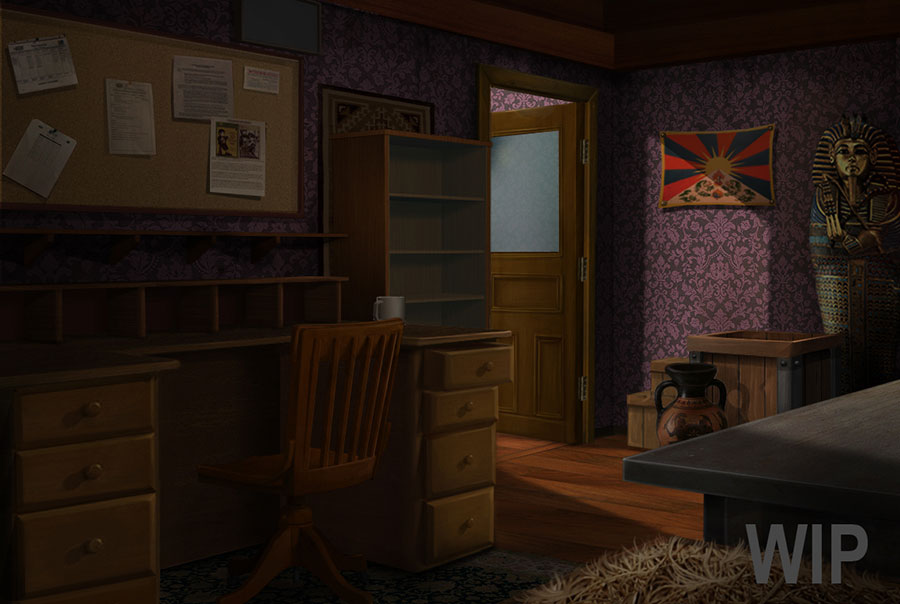
After the first paintover has been approved additional background elements are added to flesh out the scene.
Curator Office: Iteration
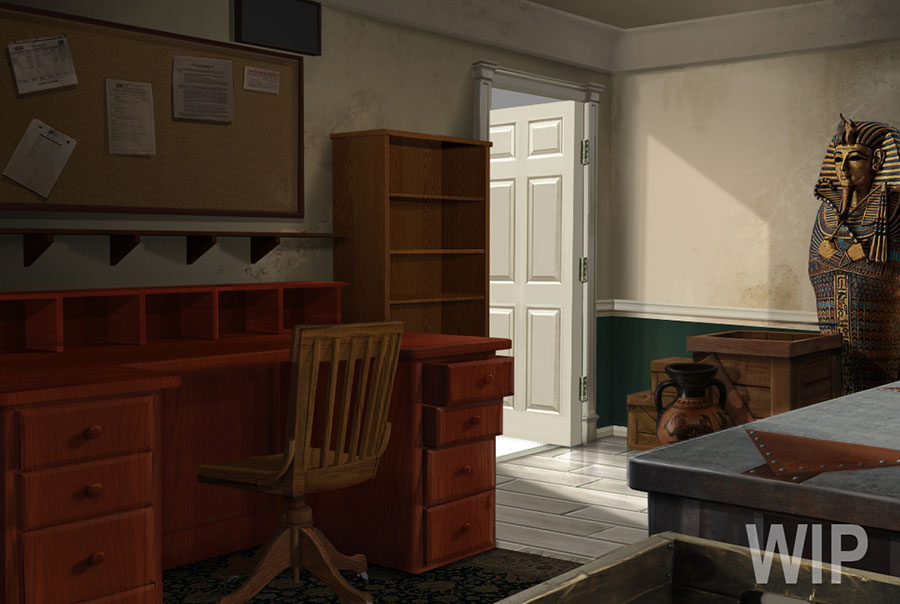
The scene then goes through a round of iteration to make adjustments to things in the scene that might not be working. In the case of this scene the decision was made to make the scene brighter by changing the wall paper and office door, as well as, adjusting the intensity of the light coming from the door.
Curator Office: Additional Polish
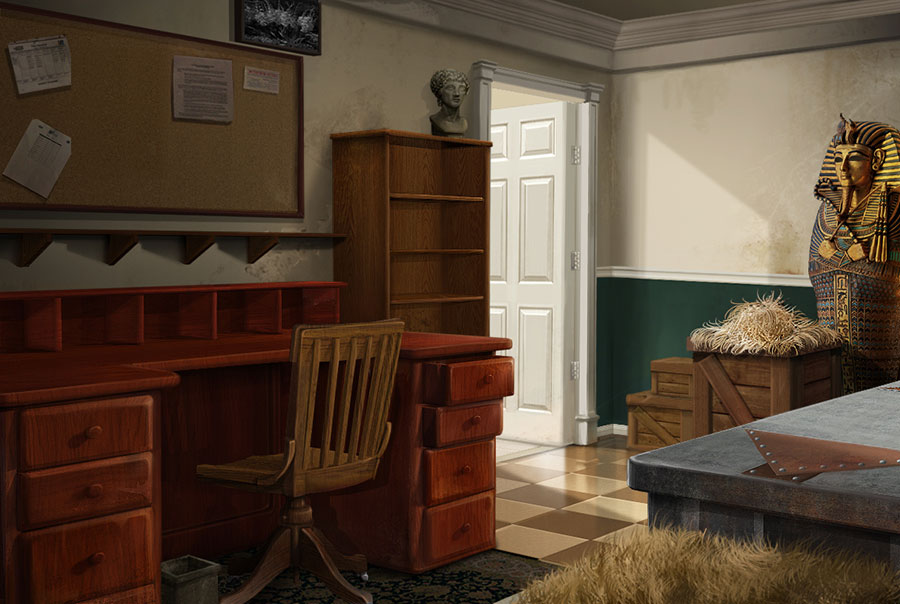
The scene goes through a polish pass and has a few objects placed in it to visualize the direction for clue paintovers.
Curator Office: Clues Added
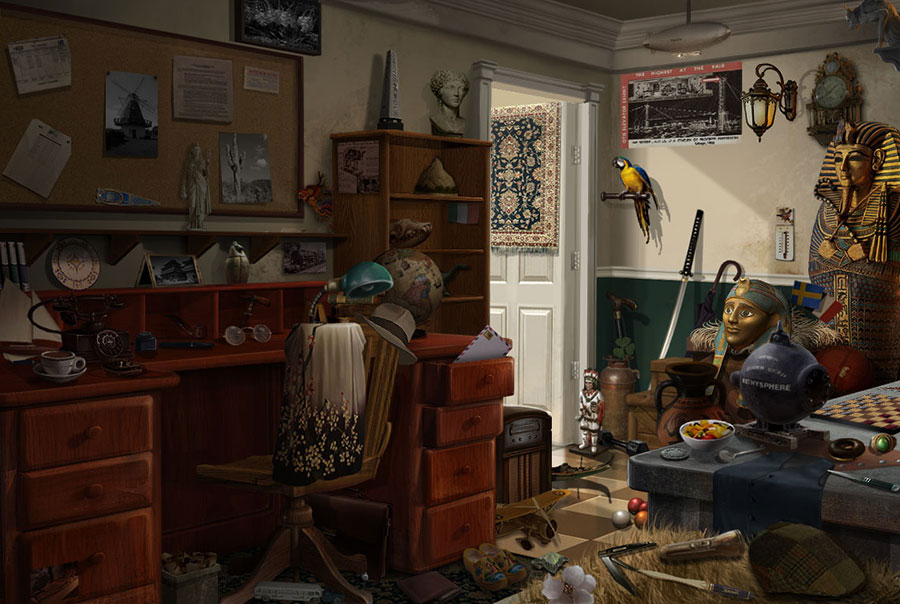
Finally the clues are added to make sure scaling, lighting, and placement are correct and visually acceptable.
Kiplings Study: Scene Composition
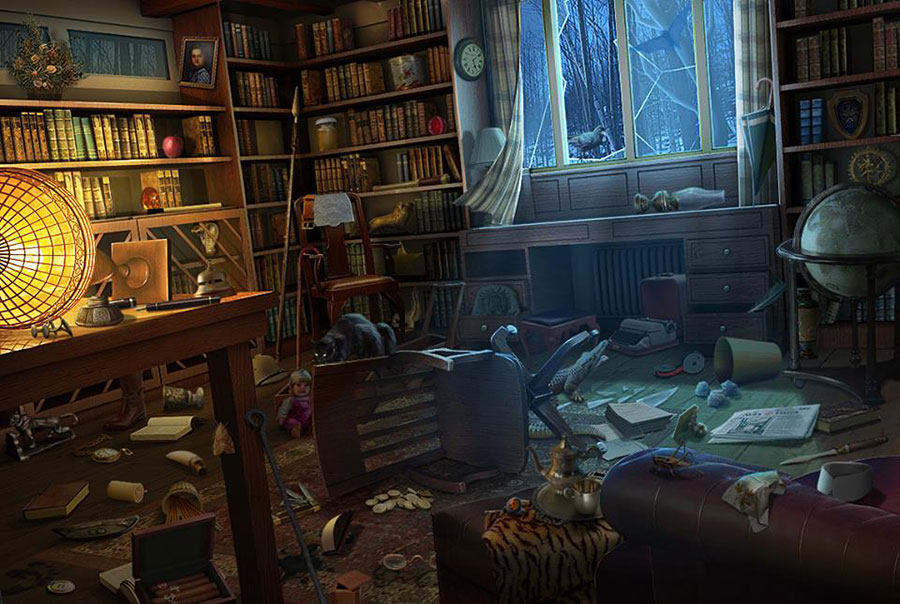
Sometimes it feels like hidden object games are an explosion of objects or are a messy room. While this can be the case choosing a good location and relevant objects help to make scenes feel less cluttered. Additionally the most successful scene are typically scenes where players are peering into or looking through the scene to give it depth (foreground, middle ground and background). This allows for more dynamic scenes and a larger variance in the places objects can be hidden but also the scale and type of objects that can be hidden in a scene as well.
The above scene works well as we're looking from behind some furniture across the room. The scene is also of a breakin which gives more creedence to having objects scattered across the scene and being generally messy.
Italian Alley: Scene Composition
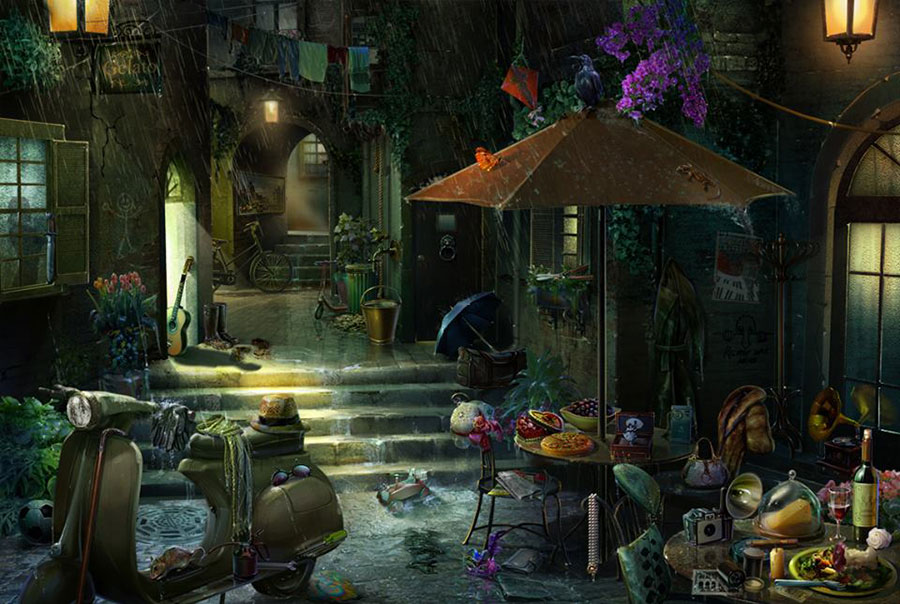
This scene does feel a bit messy given the objects, however, it has a great composition with the players looking through the alley way. There are a number of great fore, mid and background areas to place objects in this scene. Because of this the scene might actually be harder for players as there are more areas of interested to scan when looking for objects.
Clue Distribution
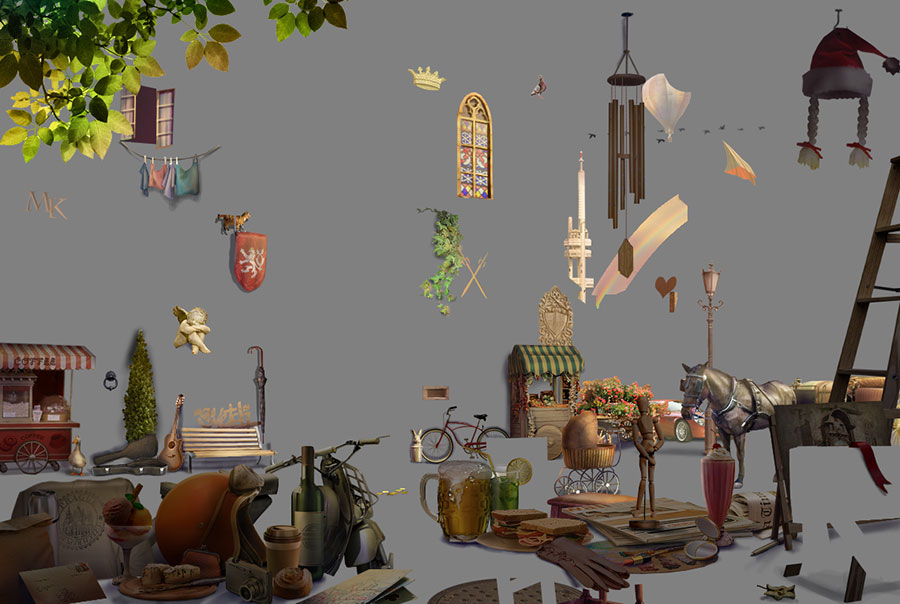
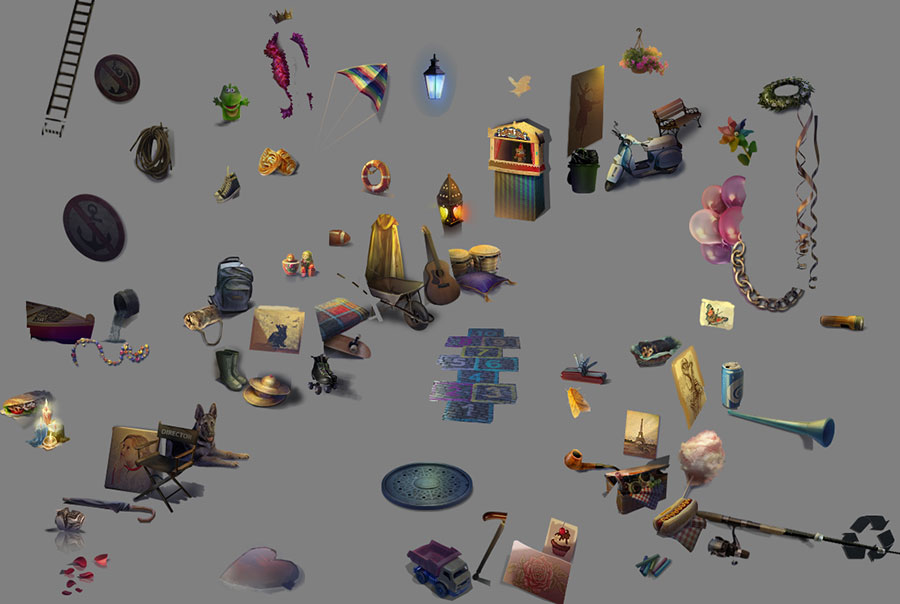
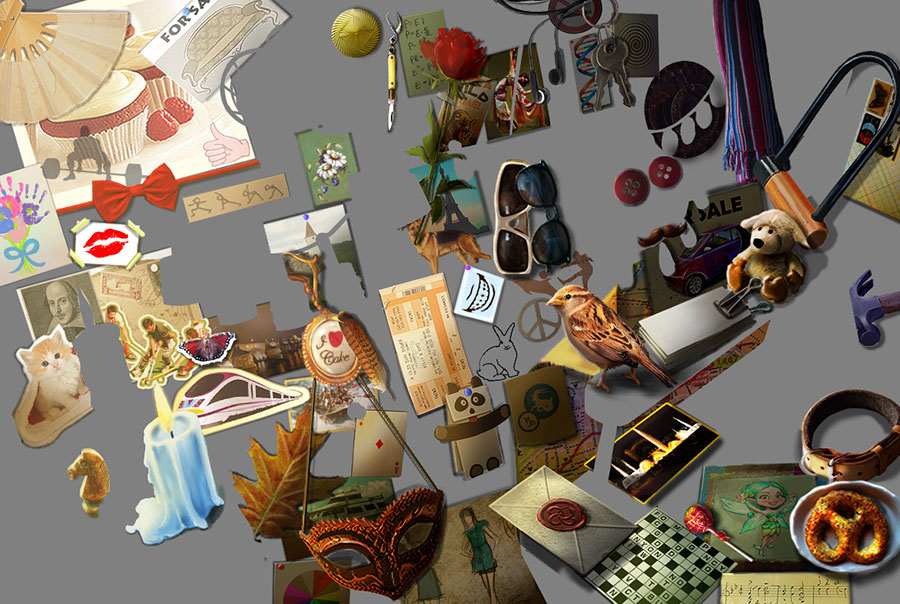
Clues should be as evenly distributed across the scene as possible. This can change depending on the difficulty of the scene and other desired goals and outcomes. But generally we dont want players to identify hotspots on scenes where they have a high chance to find clues. We want to promote players searching the entire scene.